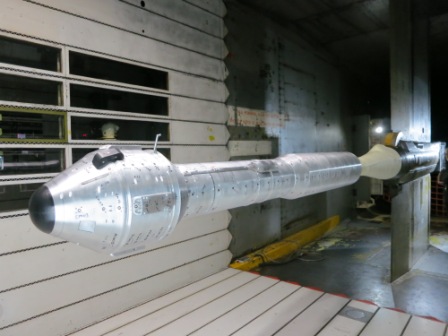CST-100 Mock up in wind tunnel Boeing, NASA's Commercial Crew Program (CCP) partner, recently performed wind tunnel testing of its...
 |
| CST-100 Mock up in wind tunnel |
Boeing, NASA's Commercial Crew Program (CCP) partner, recently performed wind tunnel testing of its CST-100 spacecraft and integrated launch vehicle, the United Launch Alliance (ULA) Atlas V rocket as well as a thrust test of the Centaur rocket stage.
The testing is part of NASA's Commercial Crew Integrated Capability (CCiCap) initiative, intended to make commercial human spaceflight services available for government and commercial customers.
Boeing and ULA also worked together to test a newly developed component of the Atlas V's Centaur upper stage.
Boeing now has completed two of eight performance milestones under CCiCap and is on track to have completed all 19 of its milestones around mid-2014.
The wind tunnel testing, which began in March and wrapped up in May at NASA's Ames Research Center in Moffett Field, California, were the first interface tests of Boeing's spacecraft, launch vehicle adaptor and launch vehicle.
A scale model of the integrated spacecraft and rocket was placed in Ames' 11-foot diameter transonic wind tunnel. The data gathered provides Boeing with critical information it needs to ensure its system is safe for launching crews to low-Earth orbit.
The Centaur liquid oxygen-feed duct line was tested in March in Murrieta, California, to characterize how liquid oxygen moves fromthe stage's oxygen tank to its two engines where the propellant will be mixed with liquid hydrogen to create thrust.
The Centaur, which takes over after the Atlas V first stage runs low on propellants, will push the spacecraft to its intended orbit.
The Centaur has flown more than 140 times since the 1960s, although the Commercial Crew Program (CCP) would be its first use for a manned spacecraft, it also carried NASA's Curiosity science rover to Mars.
The CST-100 is expected to complete its first test mission in 2016.
The reusable Crew Space Transportation spacecraft, the CST-100 will carry up to seven astronauts into low Earth orbit (LEO) and can remain docked to a space station for up to six months.









